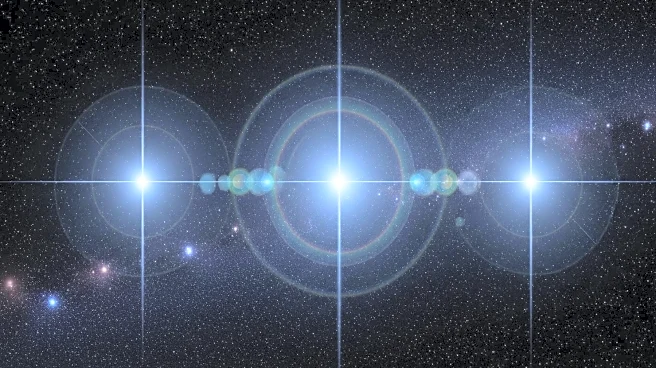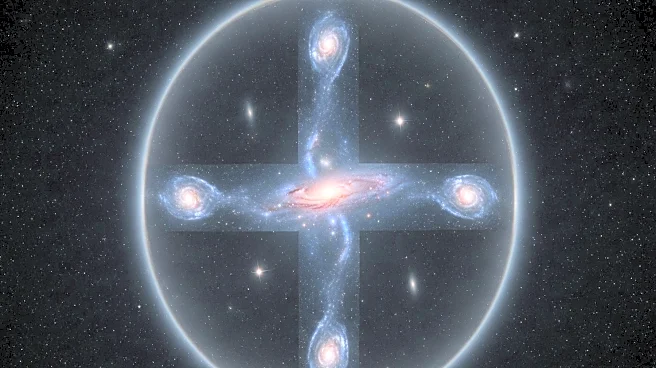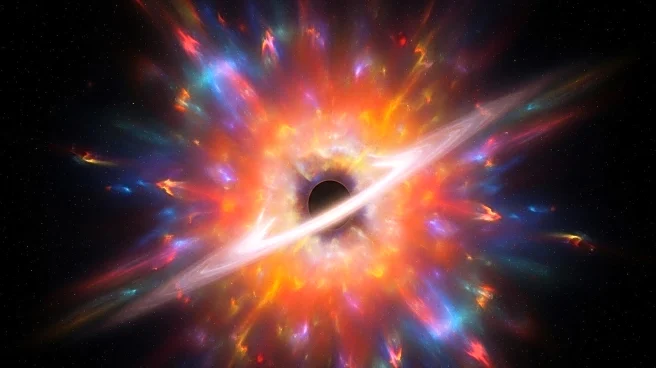What's Happening?
Astronomers have identified a rare cosmic alignment known as an Einstein Cross, which typically displays four points of light due to gravitational lensing. However, recent observations revealed a fifth point of light, suggesting the presence of a massive dark matter halo. This discovery was made using data from the Northern Extended Millimeter Array (NOEMA) and the Atacama Large Millimeter/submillimeter Array (ALMA). The anomaly persisted across multiple observations, leading researchers to conclude that the fifth image could only be explained by the presence of dark matter, which is invisible but has significant gravitational effects. The study, conducted by researchers from Rutgers University and the French National Centre for Scientific Research, highlights the role of dark matter in magnifying distant galaxies, allowing for detailed study of cosmic phenomena.
Why It's Important?
The discovery of the massive dark matter halo is significant as it provides a new method to study dark matter, which constitutes a large portion of the universe but remains invisible. Understanding dark matter is crucial for comprehending the universe's structure and evolution. This finding also enhances the ability to study distant galaxies, offering insights into their composition and behavior. The research underscores the importance of gravitational lensing as a tool for astronomical observation, potentially leading to further discoveries about the universe's hidden components. The ability to model and predict cosmic phenomena using dark matter could revolutionize astrophysics and cosmology.
What's Next?
Future observations may reveal additional features of the distant galaxy HerS-3, such as gas flows, which would provide further evidence of dark matter's magnifying effects. Continued research in this area could lead to more discoveries about the nature and distribution of dark matter in the universe. Astronomers may use similar techniques to study other cosmic phenomena, potentially uncovering new aspects of the universe's hidden structure. The findings could influence future telescope designs and observational strategies, focusing on gravitational lensing as a key method for exploring the cosmos.
Beyond the Headlines
The discovery raises ethical and philosophical questions about the nature of the universe and our understanding of unseen forces. It challenges existing models of cosmic structure and prompts a reevaluation of how we perceive and study the universe. The implications of dark matter's role in cosmic phenomena could lead to long-term shifts in scientific paradigms, influencing both theoretical and observational astrophysics.










